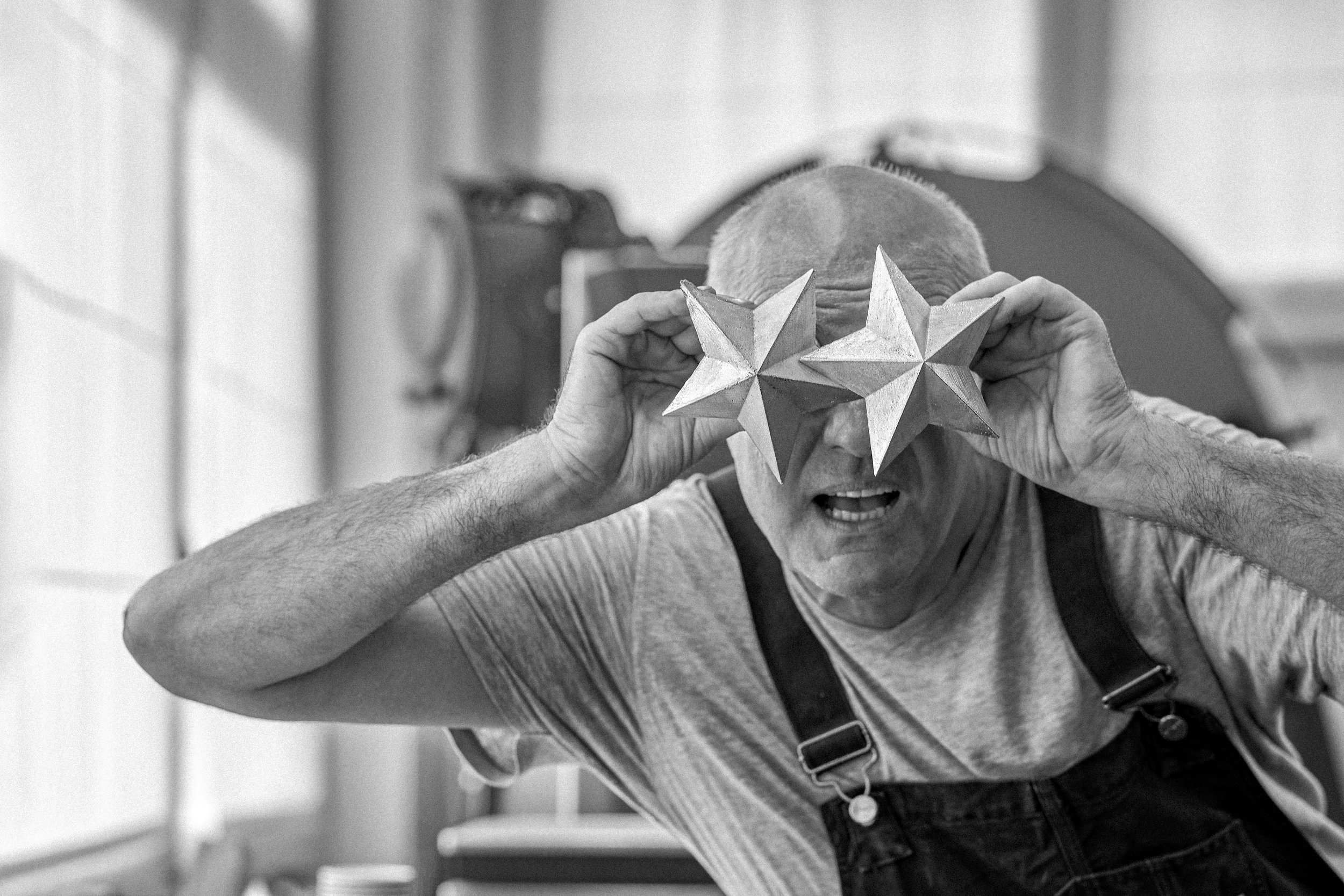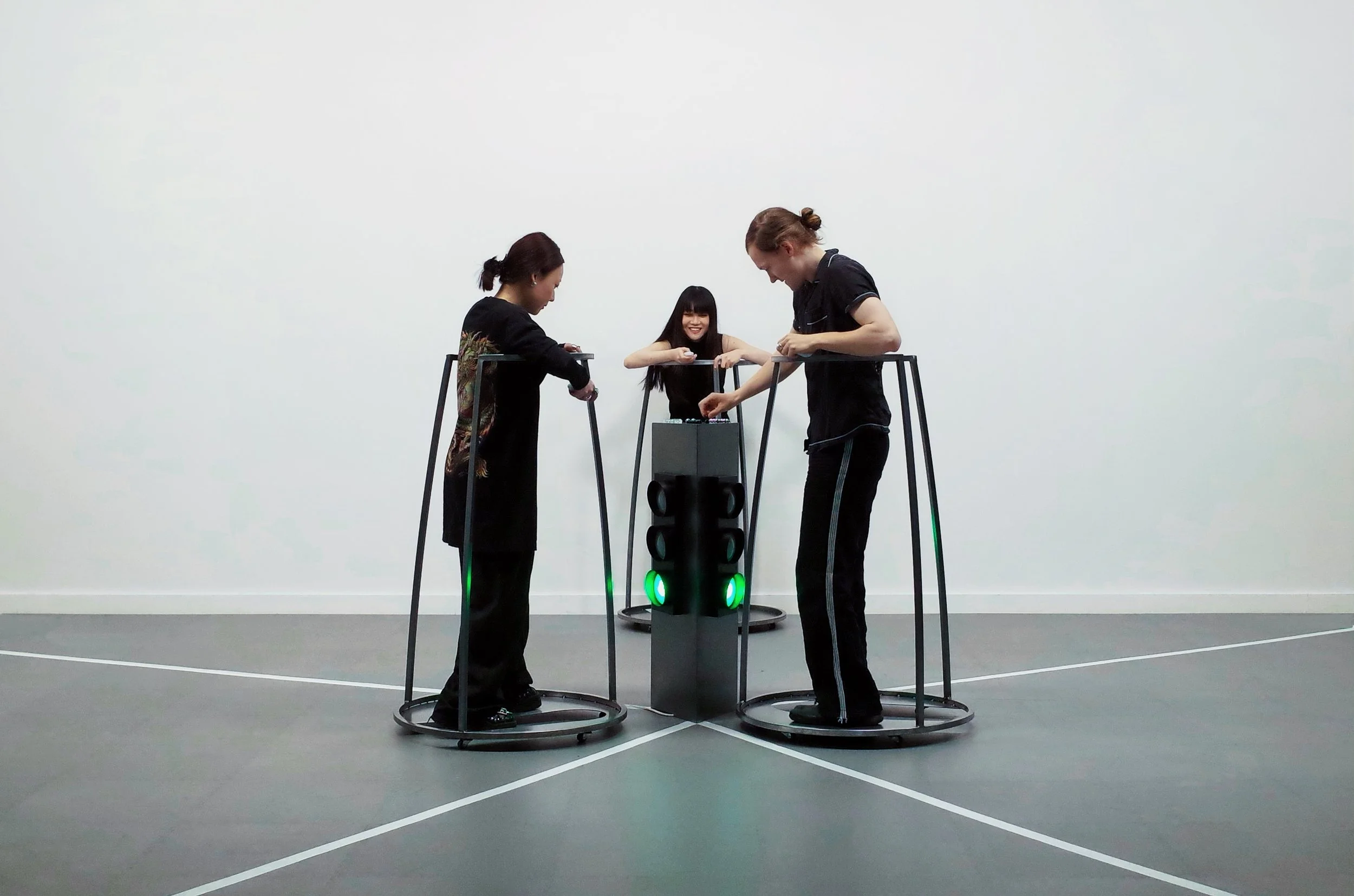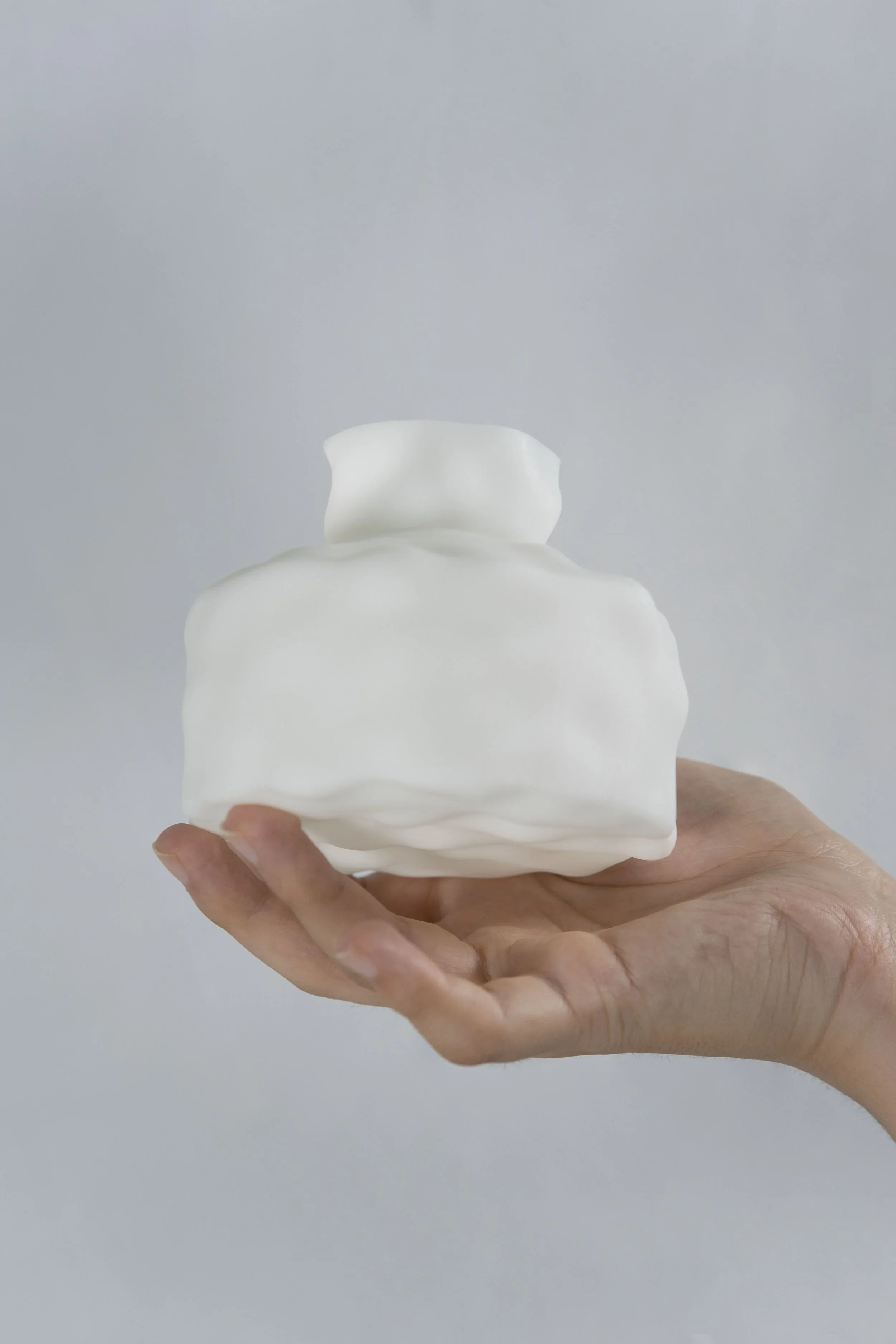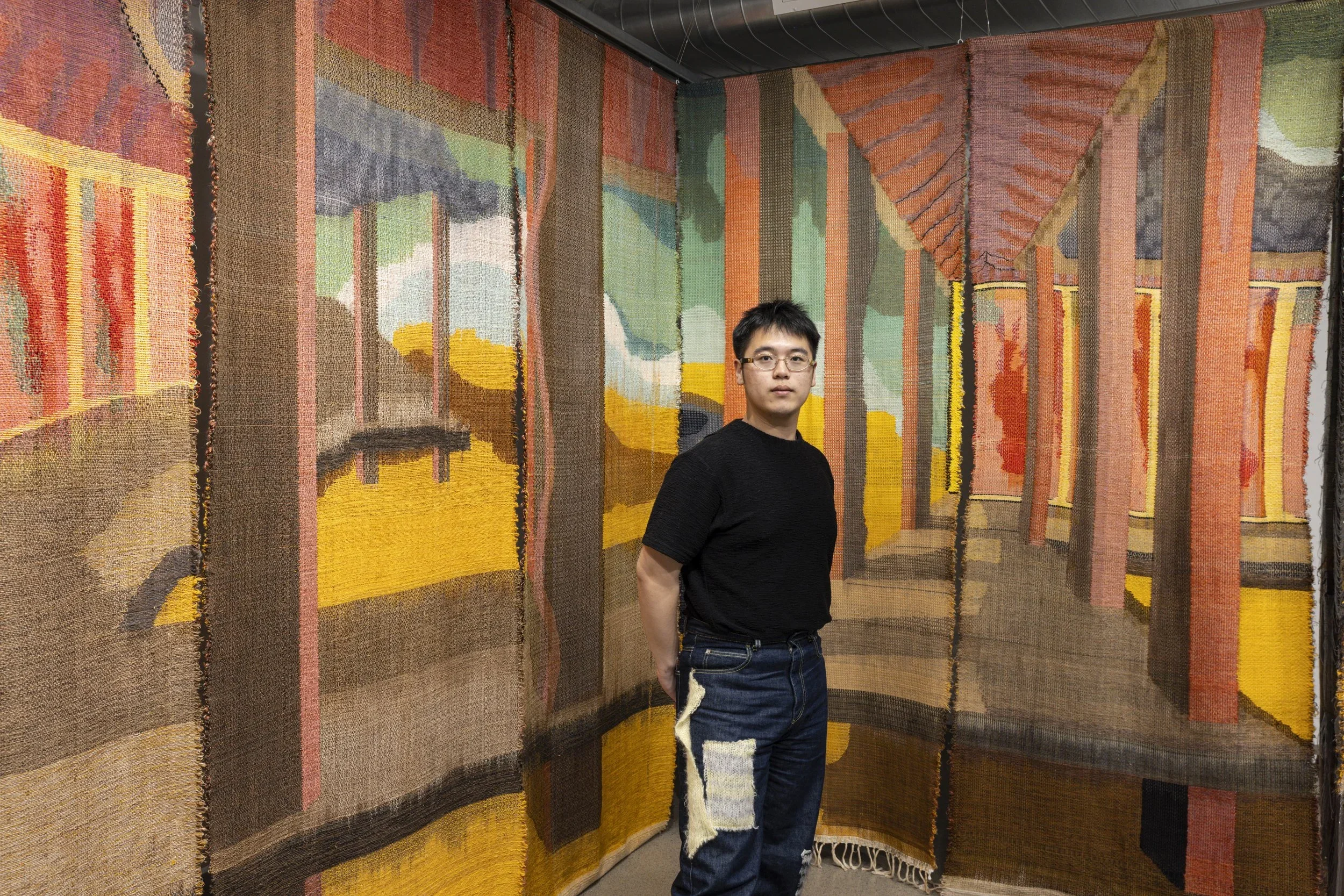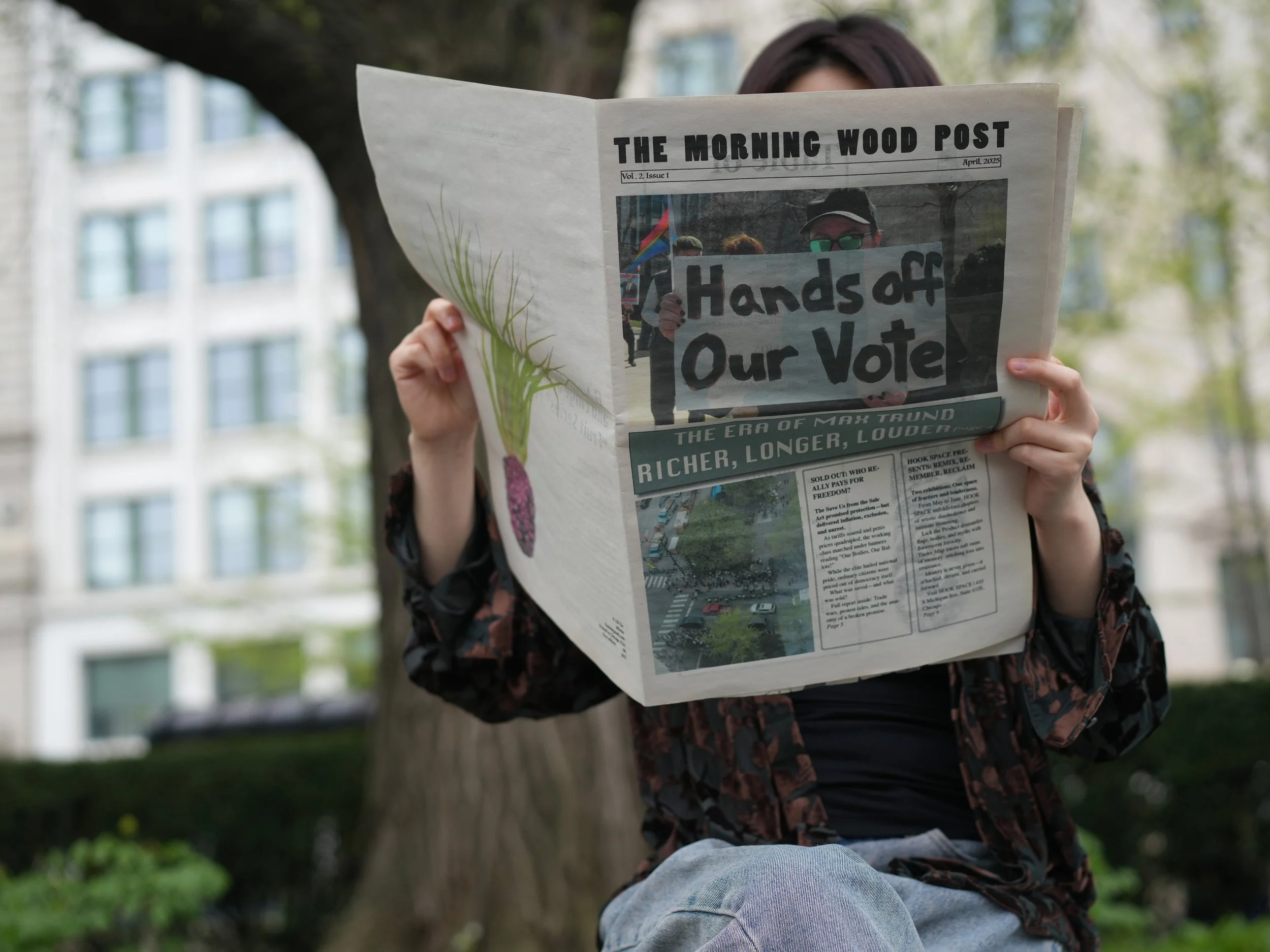10 Questions with Claude Stahel
Al-Tiba9 Art Magazine ISSUE14 | Featured Artist
Claude Stahel, born in 1966, lives and works in Zurich. His career has been shaped by analog black and white photography, which he taught as part of his apprenticeship as a photographer learned from the ground up with Fred Waldvogel (a former student of Hans Finsler). Stahel's photographic activities mostly focused on portraits and people.
During the lockdown, Stahel discovered working in three-dimensional space. The work at that time consisted of several casts: First, a silicone negative was cast from the object. This was then converted back into a positive with lead-tin, resulting in an object whose original use was no longer available. These were then photographed analogously in black and white. This is how "objects were created that, in their poetic uselessness, question everything," as Michelle Roten once wrote.
With his latest works, Stahel is currently questioning the geopolitical tensions in Europe and Ukraine. The current works are cast in bronze or aluminum, which he produces himself in his studio using the technique of sand casting. Epoxy resins are also processed, depending on the topic. His works are often mobile, inviting the viewer to actively interact. Stahel's works are often politically motivated but still playful and experimental.
Claude Stahel - Portrait | Ph. Serge Hoeltschi
ARTIST STATEMENT
How much politics can art endure? Stahel just can't stay in his warm cozy heated home, while others sleep in a bomb shelter. His current objects are made, besides the creative aspect, to keep the viewer aware of the geopolitical situation.
Claude Stahel in his studio | Ph. Michael Haimburger
TV Potemkin | Project Statement
In an extremely time-consuming process, functional portable televisions from the 80s were cast in epoxy cubes. The conservation prohibits any following manipulation of the devices. The dictatorial element of determination to consume without being asked for one's own opinion calls Stahel in this installation art propaganda. The work flickers in the eyes of its viewers and absorbs their self-determination because the viewer has no possibility to change the program. They have to watch what is being projected or turn away. The arrangement of the installation is reminiscent of the remains of a shelled house in East Ukraine. The program, recorded via a VHF transmitter, shows mobile phone videos of the devastating destruction there, which Stahel received from private local Ukrainians via the communication app Telegram.
TV Potemkin is the first public work in which the cubes are used in a specific theme and with recordings in a specific context. The creative scope in the work What You See, You Believe, Stahel's working title for the installation, is limitless and, therefore, quite impressive.
TV Potemkin, epoxy resin, portable TV screens, found objects, variable dimensions, 2022 © Claude Stahel | Ph. Serge Hoeltschi
Limited edition magazine >>
INTERVIEW
Please, tell us a little bit about your background and studies. What kind of education or training helped you develop your approach to art?
At the age of 16, they kicked me out of public school. After this shock, my parents sent me to the alternative art school F&F in Zurich. It was a wild time in 1985 in Zurich, with demonstrations, punk rock, and a lot of chaos but also a lot of room for inspiration and free art.
I had the chance to study photography for four years in the atelier of Fred Waldvogel, a former student of the famous Hans Finsler. After this apprenticeship, I started my photo career as an assistant for many well-known international photographers.
At the age of 24, I founded my first studio, which burned down to the ground five years later because my lodger was not aware of how dangerous rags soaked in turpentine are. But life went on.
You started as a photographer and just recently approached 3D works and installations. Why did you decide to follow this path?
I got quite bored with commercial photography after digital was invented, and the photography market changed a lot in this period, so I started a new business 12 years ago, a coffee roastery. I refused to do any creative work for seven years and was completely focused on coffee. I guess I needed this break to mentally recover from this ongoing creative output in commercial photography.
But as it is, after seven years, I got back to my roots. During Covid, we all were dammed to stay home, and I started making silicone negatives of random objects and poured lead in these negative forms. I did it all in my kitchen. From these copies, I took analog black-and-white photos with my Mamia 6x7 camera, which I still own, and I still keep my darkroom. So I was pretty busy during these Covid times.
In the late summer after Covid, I did an exhibition of these works, which was a success and turned into a cool party. It was the start of the three-dimensional room, and soon after, Putin started to fuck up the world.
TV Potemkin (detail), epoxy resin, portable TV screens, found objects, variable dimensions, 2022 © Claude Stahel | Ph. Serge Hoeltschi
TV Potemkin (detail), epoxy resin, portable TV screens, found objects, variable dimensions, 2022 © Claude Stahel | Ph. Serge Hoeltschi
How much does your background in photography help or influence your current work? Do you find any similarities between constructing a photograph and creating an installation?
In commercial photography, the client needs a result. You get a briefing to follow and know what the result needs to be. It's a strategic process, and you must know how to follow such process.
It is similar to the work of 3D installations. First, you have a thing to tell, an idea to communicate. After this, you must find a way to realize this idea to the end. Most of my current works introduce me to many new techniques I first have to master, like how to make sand casting, materials like epoxy, silicone, steal, or how to work with gold leaves. It's just a bazaar of techniques and commodities I get confronted with every new idea I get. But since I am my own client, I have to withdraw from the challenge of giving up before finishing a work.
Let's talk about your creative process. You use different materials and elements; how do you decide what to work with? And what aspect of your work do you pay particular attention to?
Every idea starts in the brain and is influenced by whatever I see. Lately, I found a pile of firewood; I was fascinated by these chops, so I started to sand cast this firewood in aluminum. The idea behind this was, what is the purpose of noncombustible firewood? It was last winter during the energy crises, and we had the desire to keep our houses warm. Often in my works, geopolitical events drive me to create.
Back to your question, every material has its purpose. Currently, I love melted metals. But metals are difficult to use due to melting temperatures. I can't work with steel, so I use bronze or aluminum. But bronze is too heavy as a metal, so depending on the size of the works, I use aluminum too. The epoxy cast is a totally different material, and it has to be used totally off context, otherwise, one creates a rever-table instead of an artwork. These borderlines are very narrow.
TV Potemkin, epoxy resin, portable TV screens, found objects, variable dimensions, 2022 © Claude Stahel | Ph. Serge Hoeltschi
Let's talk about your project, "TV Potemkin." How did you come up with the idea for this project?
TV Potemkin was created because I realized, after the first experiments with casting objects in cubes, like my first positive Covid test or an empty can of red bull, that I was just doing river tables.
So, the process of thinking started then, and I remembered the first analog frequency TVs from the 1980s. They don't work in our digital world anymore, but on eBay, there are still a lot on the market. So I ordered many of these devices, most of them in the USA, off of eBay. In parallel, I was searching for UHF analog transmitters, which I found in China. Technically, it was a complex process with all these frequencies.
The project seems to freeze the portable devices that are not only impossible to use but also preserved from any future manipulation. What messages do you want to convey with this work?
In an extremely time-consuming process, functional portable televisions from the 80s were cast in epoxy cubes. The conservation prohibits any following manipulation of the devices. The dictatorial element of determination to consume without being asked for one's own opinion in this installation recalls art propaganda. The work flickers in the eyes of its viewers and absorbs their self-determination because the viewer has no possibility to change the program. They have to watch what is being projected or turn away. The arrangement of the installation is reminiscent of the remains of a shelled house in East Ukraine.
The program, recorded via a VHF transmitter, shows mobile phone videos of the devastating destruction there, which I received from private local Ukrainians via the communication app Telegram.
Mariupol is the first public work in which the cubes are used in a specific theme and with recordings in a specific context. The creative scope of the work, whose working title was What You See, You Believe, is limitless and therefore quite impressive.
TV Potemkin (detail), epoxy resin, portable TV screens, found objects, variable dimensions, 2022 © Claude Stahel | Ph. Serge Hoeltschi
The project was recently exhibited in Venice for the Arte Laguna Prize, a prestigious achievement. Can you tell us more about this experience?
Arte Laguna Prize was one of my best experiences in the world of contemporary art. I met so many great people with whom I'm still in contact, and we even realized new collaboration projects together. There was so much energy and power in this event, and I can recommend this exhibition and challenge to every artist. I was so surprised to be a finalist.
You are already experimenting with different techniques and materials. Is there anything else you would like to incorporate into your practice? Or perhaps, do you ever consider going back to pure photography?
Every medium is just a tool for the assumption, "If you have to say something, use the medium to say what you have to say and learn something of what the material wants to teach you.
Therefore, if the idea needs photography, I will use photography.
© Claude Stahel | Ph. Michael Haimburger
© Claude Stahel | Ph. Michael Haimburger
Talking about the future, what are your plans for the future? Do you have any new series or projects you are currently developing?
Currently, I'm working on a 30 kg sand casting titled "The Flood," which illustrates the man-made ecocide of the Kakhovka dam: The Flood When The Levee Breaks.
On June 6, 2023, one of the largest ecocides in Ukraine and Europe was triggered by the blasting of the Kakhovka dam near Cherson, which was presumably initiated by the Russian side. People lost their homes, thousands of animals died as a result of the tsunami and lost their habitat, and dangerous substances got into the water, including tons of liters of machine oil.
My work shows the flooding of 30 houses in a graphic implementation. It is a full-cast aluminum plate that was manufactured in-house using the sand-casting process. My first prototypes were only 20 by 20 centimeters in size and were made by hand in an old shipping container in which I set up my foundry.
Each panel is first produced as a 3D print, and the resulting shape is molded in sand in a two-part mold box and then cast - a cavity is formed into which liquid aluminum is now poured, which cools down after some time and becomes a solid work of art. However, I was not yet satisfied with the size of the first prototypes, and the catastrophe assumed such large dimensions that The Flood had to be bigger and more insistent. For the first time, I worked with a foundry to reproduce my work in a size of 70 by 70 centimeters. The result was a massive full-cast plate that weighs 30 kilograms and looks far more impressive than the smaller prototypes.
Finally, any shows, galleries, or publications where our readers can find your work?
This year I don’t have any solo exhibition planned, therefore I will participate in group exhibition only. In October 2023, from the 13th through the 29th, "The Flood" will be presented to the public the first time in Berlin, Germany. In November, I will have a collab exhibition with artist Eduard Müller at Galerie Rudolf Mangisch, in Zürich (Switzerland). You can find more information about my work online on my website and all the news on my Instagram page.
Artist’s Talk
Al-Tiba9 Interviews is a promotional platform for artists to articulate their vision and engage them with our diverse readership through a published art dialogue. The artists are interviewed by Mohamed Benhadj, the founder & curator of Al-Tiba9, to highlight their artistic careers and introduce them to the international contemporary art scene across our vast network of museums, galleries, art professionals, art dealers, collectors, and art lovers across the globe.












